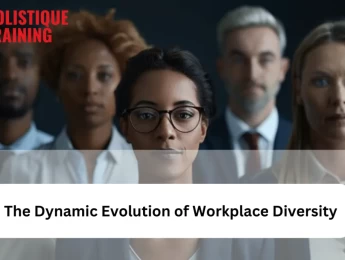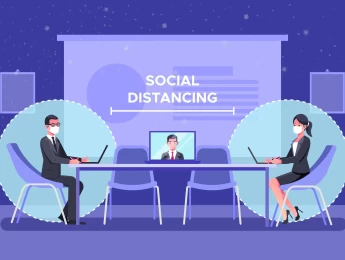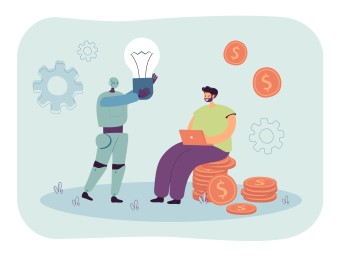- Table of Contents
- Introduction
- Why is Diversity Important for Businesses?
- What Does Diversity Entail in the Workplace?
- Demographic Diversity:
- Cultural Diversity:
- Educational and Socioeconomic Backgrounds:
- Cognitive Diversity:
- Physical Abilities and Disabilities:
- Work and Life Experiences:
- Diverse Skills and Talents:
- Intersectionality:
- How Can Organizations Foster a Diverse Culture?
- Leadership Commitment:
- Inclusive Recruitment and Hiring Practices:
- Employee Resource Groups (ERGs):
- Diversity Training and Education:
- Inclusive Policies and Practices:
- Promotion of Inclusive Leadership:
- Employee Feedback and Engagement:
- Community Engagement and Partnerships:
- What role does diversity play in fostering employee satisfaction?
- Sense of Belonging and Inclusion:
- Opportunities for Growth and Development:
- Enhanced Team Collaboration:
- Increased Innovation and Creativity:
- Fairness and Equity:
- Improved Employee Engagement:
- Enhanced Organizational Reputation:
- Positive Work Culture:
- What Are the Challenges of Managing Diversity?
- Resistance to Change:
- Unconscious Bias:
- Communication Barriers:
- Conflict and Tension:
- Stereotypes and Prejudices:
- Lack of Inclusive Policies and Practices:
- Underrepresentation in Leadership:
- Retention and Engagement:
- Resource Allocation:
- Cultural Adaptation:
- Measuring Impact and Progress:
- Legal and Compliance Issues:
- Resistance from Stakeholders:
- What Are the Future Trends in Diversity and Inclusion?
- Focus on Intersectionality:
- Data-Driven Diversity Strategies:
- Emphasis on Inclusive Leadership:
- Remote and Hybrid Work Inclusion:
- Expanded Definition of Diversity:
- Equity and Social Justice:
- Supplier Diversity and Economic Inclusion:
- Diverse Talent Pipelines:
- Cultural Competency Training:
- Community Engagement and Advocacy:
- Conclusion
Introduction
In today's rapidly changing world, diversity and inclusion have become imperative pillars of organizational success and societal progress. As workplaces evolve to reflect the rich tapestry of human experience, it is crucial for businesses and leaders to stay attuned to emerging trends and best practices in fostering diversity and inclusion.
This article explores the dynamic landscape of diversity and inclusion, shedding light on future trends that are shaping the way organizations approach diversity initiatives. From embracing intersectionality and leveraging data-driven strategies to promoting inclusive leadership and advancing social justice, the future of diversity and inclusion is multidimensional and transformative.
Join us as we delve into the exciting journey ahead, exploring innovative approaches and evolving paradigms that promise to create more equitable, vibrant, and inclusive workplaces for all. Together, we can navigate this evolving terrain and embrace the power of diversity to drive organizational success and societal change.
Why is Diversity Important for Businesses?
Diversity is important for businesses for several compelling reasons:
- Innovation and Creativity: Diversity unites individuals with varied backgrounds, experiences, and perspectives. This diversity of thought fosters innovation and creativity within teams, leading to fresh ideas and solutions.
- Problem-solving and Decision-making:Diverse teams excel in tackling complex challenges and reaching well-rounded conclusions. They can draw from a wider range of insights and approaches, resulting in more effective problem-solving processes.
- Market Reach and Customer Insights: In a globalized world, businesses benefit from having diverse teams that reflect their customer base. Diversity helps in understanding diverse markets, customer preferences, and cultural nuances, leading to improved customer service and product innovation.
- Employee Engagement and Retention: Inclusive workplaces where employees feel valued and respected tend to have higher levels of employee engagement and lower turnover rates. Employees are more likely to stay with organizations that prioritize diversity and inclusion.
- Brand Reputation and Corporate Social Responsibility (CSR): Companies that embrace diversity are seen as progressive and socially responsible. A commitment to diversity can enhance a company's reputation, attract top talent, and strengthen relationships with stakeholders.
- Legal and Ethical Imperatives:Diversity and inclusion are increasingly recognized as legal and ethical imperatives. Many jurisdictions have anti-discrimination laws that require businesses to promote diversity and equal opportunity.
- Differentiated Employer Brand:Companies that prioritize diversity can differentiate themselves in the competitive job market. They become employers of choice for individuals seeking inclusive and diverse workplaces.
Diversity is crucial for businesses to thrive in a dynamic and interconnected world. It drives innovation, enhances decision-making, strengthens customer relationships, improves employee satisfaction, and contributes to a positive brand image.
What Does Diversity Entail in the Workplace?
Diversity in the workplace entails a broad spectrum of characteristics, experiences, and perspectives that employees bring to an organization. It extends beyond traditional categories such as race, gender, and ethnicity to encompass various dimensions of human identity and difference. Here's what diversity entails in the workplace:
Demographic Diversity:
- Race and Ethnicity: Includes individuals from different racial and ethnic backgrounds.
- Gender: Encompasses individuals of different genders and gender identities.
- Age: Represents individuals from different age groups, including generations like Baby Boomers, Generation X, Millennials, and Generation Z.
- Sexual Orientation: Embraces individuals with diverse sexual orientations, such as LGBTQ+ employees.
Cultural Diversity:
- Nationality: Involves employees from various countries and cultural backgrounds.
- Language: Encompasses individuals who speak different languages and dialects.
- Religion: Includes individuals with different religious beliefs and practices.
- Cultural Practices: Recognizes diverse customs, traditions, and values.
Educational and Socioeconomic Backgrounds:
- Educational Attainment: Involves employees with diverse levels of education and academic backgrounds.
- Socioeconomic Status: Represents individuals from different socioeconomic backgrounds.
Cognitive Diversity:
- Thinking Styles: Encompasses individuals with diverse problem-solving approaches and cognitive abilities.
- Perspectives and Experiences: Reflects varied life experiences, career paths, and professional backgrounds.
Physical Abilities and Disabilities:
- Physical Abilities: Includes employees with different physical abilities and health conditions.
- Disabilities: Embraces individuals with visible and invisible disabilities.
Work and Life Experiences:
- Work History: Represents employees with diverse work experiences and industries.
- Life Experiences: Encompasses individuals with unique life journeys, including immigrants, refugees, and individuals from underrepresented communities.
Diverse Skills and Talents:
- Functional Skills: Includes employees with diverse skills in technology, leadership, creativity, and specialized domains.
- Creative Talents: Represents individuals with artistic, musical, or other creative talents.
Intersectionality:
- Acknowledges that individuals embody multiple dimensions of diversity simultaneously, such as being a woman of color or a disabled veteran.
Table 1: Dimensions of Diversity in the Workplace
Category | Description |
Demographic Diversity |
|
Race and Ethnicity | Includes individuals from different racial and ethnic backgrounds. |
Gender | Encompasses individuals of different genders and gender identities. |
Age | Represents individuals from different age groups, including Baby Boomers to Generation Z. |
Sexual Orientation | Embraces individuals with diverse sexual orientations, such as LGBTQ+ employees. |
Cultural Diversity |
|
Nationality | Involves employees from various countries and cultural backgrounds. |
Language | Encompasses individuals who speak different languages and dialects. |
Religion | Includes individuals with different religious beliefs and practices. |
Cultural Practices | Recognizes diverse customs, traditions, and values. |
Educational and Socioeconomic Backgrounds |
|
Educational Attainment | Involves employees with diverse levels of education and academic backgrounds. |
Socioeconomic Status | Represents individuals from different socioeconomic backgrounds. |
Cognitive Diversity |
|
Thinking Styles | Encompasses individuals with diverse problem-solving approaches and cognitive abilities. |
Perspectives and Experiences | Reflects varied life experiences, career paths, and professional backgrounds. |
Physical Abilities and Disabilities |
|
Physical Abilities | Includes employees with different physical abilities and health conditions. |
Disabilities | Embraces individuals with visible and invisible disabilities. |
Work and Life Experiences |
|
Work History | Represents employees with diverse work experiences and industries. |
Life Experiences | Encompasses individuals with unique life journeys, including immigrants, refugees, and underrepresented communities. |
Diverse Skills and Talents |
|
Functional Skills | Includes employees with diverse skills in technology, leadership, creativity, and specialized domains. |
Creative Talents | Represents individuals with artistic, musical, or other creative talents. |
Intersectionality |
|
Intersectional Identities | Acknowledges that individuals embody multiple dimensions of diversity simultaneously (e.g., race, gender, disability). |
Workplace diversity encompasses a wide range of attributes, identities, and backgrounds that contribute to a rich and inclusive organizational culture. Embracing diversity fosters creativity, innovation, and empathy among employees, driving business success and creating a more equitable and welcoming workplace for all.
How Can Organizations Foster a Diverse Culture?
Organizations can foster a diverse culture by implementing intentional strategies and initiatives that prioritize inclusion, equity, and belonging. Here are key approaches to promote diversity in the workplace:
Leadership Commitment:
- Set Clear Goals: Leadership should establish and communicate clear diversity goals aligned with the organization's mission and values.
- Allocate Resources: Dedicate financial and human resources to support diversity initiatives, training, and recruitment efforts.
- Lead by Example: Demonstrate commitment to diversity through visible actions and decision-making at all levels of the organization.
Inclusive Recruitment and Hiring Practices:
- Diverse Talent Pools: Proactively seek diverse candidates through targeted recruitment strategies and partnerships with diverse organizations.
- Unbiased Hiring Processes: Implement structured and objective hiring practices to mitigate unconscious bias in candidate selection.
- Diverse Interview Panels: Ensure diverse representation on interview panels to assess candidates from different perspectives.
Employee Resource Groups (ERGs):
- Support Networks: Establish and empowerERGs that provide a platform for employees from underrepresented groups to connect, advocate, and support one another.
- Leadership Development: Offer leadership opportunities within ERGs to develop diverse talent and foster professional growth.
Diversity Training and Education:
- Mandatory Training: Provide regular diversity and inclusion training for all employees to raise awareness, build empathy, and promote understanding of different perspectives.
- Cultural Competency Workshops: Offer workshops that enhance cultural competency and sensitivity among employees and leaders.
Inclusive Policies and Practices:
- Review Policies: Regularly review and update HR policies and procedures to ensure they are inclusive and equitable for all employees.
- Flexible Work Arrangements: Implement flexible work policies that accommodate diverse needs and lifestyles.
Promotion of Inclusive Leadership:
- Diverse Leadership Representation: Actively promote diversity in leadership roles to demonstrate a commitment to inclusivity.
- Leadership Training: Provide training for managers and leaders on inclusive leadership practices and behaviors.
Employee Feedback and Engagement:
- Feedback Mechanisms: Create avenues for employees to provide feedback on diversity initiatives and experiences within the organization.
- Engagement Surveys: Incorporate diversity-related questions into employee engagement surveys to assess inclusivity and identify areas for improvement.
Community Engagement and Partnerships:
- Partnerships with Diverse Organizations: Collaborate with community organizations and networks that support diversity and inclusion efforts.
- Community Outreach: Engage in outreach programs and initiatives that contribute to diverse communities and address social equity issues.

By implementing these strategies systematically and consistently, organizations can cultivate a diverse and inclusive culture where employees feel valued, respected, and empowered to contribute their unique talents and perspectives to achieve organizational success.
What role does diversity play in fostering employee satisfaction?
Diversity plays a significant role in fostering employee satisfaction by creating a work environment that promotes inclusion, belonging, and appreciation of individual differences. Here are several ways diversity contributes to employee satisfaction:
Sense of Belonging and Inclusion:
- Diversity ensures that employees from various backgrounds see themselves represented and valued within the organization.
- When employees feel included and respected regardless of their differences, they are more likely to feel a sense of belonging, leading to higher job satisfaction.
Opportunities for Growth and Development:
- In diverse workplaces, employees have exposure to different perspectives, experiences, and ideas.
- This exposure can lead to enhanced learning opportunities, skill development, and professional growth, which contribute to higher levels of job satisfaction.
Enhanced Team Collaboration:
- Diversity fosters collaboration among employees with varied backgrounds and skills.
- Collaborative environments where diverse perspectives are welcomed and appreciated lead to moreeffective teamwork, increased job satisfaction, and a sense of accomplishment.
Increased Innovation and Creativity:
- Diverse teams are more likely to generate innovative ideas and solutions due to the combination of different viewpoints and approaches.
- Being part of a creative and innovative team can enhance job satisfaction by providing stimulating and challenging work experiences.
Fairness and Equity:
- Organizations that prioritize diversity tend to have fair and equitable practices in place.
- When employees perceive fairness in hiring, promotions, and opportunities for advancement, they are more satisfied with their jobs and feel valued by the organization.
Improved Employee Engagement:
- Employees in diverse workplaces are more engaged because they feel their contributions are recognized and valued.
- Engaged employees are more likely to be satisfied with their work, resulting in higher levels of overall job satisfaction.
Enhanced Organizational Reputation:
- Organizations known for their commitment to diversity and inclusion often attract employees who align with these values.
- Being part of a reputable and socially responsible organization can positively impact employee satisfaction and pride in their workplace.
Positive Work Culture:
- Diverse workplaces promote a positive and inclusive work culture where employees feel respected and appreciated for who they are.
- A positive work culture contributes significantly to overall employee satisfaction and job fulfillment.
Diversity contributes to employee satisfaction by fostering a sense of belonging, providing opportunities for growth and development, promoting fairness and equity, encouraging collaboration and innovation, enhancing engagement, and cultivating a positive work culture. Organizations that prioritize diversity and inclusion create environments where employees are more likely to thrive and feel fulfilled in their roles.
What Are the Challenges of Managing Diversity?
Managing diversity in the workplace comes with its own set of challenges that organizations need to navigate effectively to reap the benefits of a diverse workforce. Some common challenges include:
Resistance to Change:
Some employees and leaders may resist efforts to embrace diversity due to fear of the unknown or discomfort with stepping outside their comfort zones.
Unconscious Bias:
Unconscious biases based on race, gender, age, or other characteristics can influence decision-making in hiring, promotions, and day-to-day interactions.
Communication Barriers:
Differences in language, communication styles, or cultural norms can lead to misunderstandings and breakdowns in effective communication among team members.
Conflict and Tension:
Diverse teams may experience interpersonal conflicts or tensions arising from cultural misunderstandings, differing opinions, or values.
Stereotypes and Prejudices:
Stereotypes and prejudices about certain groups can create barriers to collaboration and hinder the development of inclusive work environments.
Lack of Inclusive Policies and Practices:
Organizations may lack inclusive HR policies, practices, and procedures that accommodate the needs and preferences of diverse employees.
Underrepresentation in Leadership:
Limited representation of diverse individuals in leadership roles can hinder efforts to create inclusive cultures and serve as role models for others.
Retention and Engagement:
Diverse employees may feel isolated or undervalued if they perceive a lack of opportunities for advancement or if they experience microaggressions or discrimination.
Resource Allocation:
Allocating resources (financial, time, and personnel) to diversity initiatives may be challenging when organizations face competing priorities.
Cultural Adaptation:
Employees from different cultural backgrounds may require time and support to adapt to the organizational culture and norms.
Measuring Impact and Progress:
It can be difficult to measure the impact of diversity initiatives and track progress toward diversity goals without clear metrics and data.
Legal and Compliance Issues:
Failure to comply with anti-discrimination laws and regulations related to diversity and inclusion can expose organizations to legal risks and reputational damage.
Resistance from Stakeholders:
External stakeholders or customers may have differing views on diversity initiatives, posing challenges to organizational alignment and support.
Addressing these challenges requires a comprehensive approach that includes education, training, policy development, leadership commitment, and ongoing evaluation. Organizations must actively work to create inclusive cultures where diversity is celebrated and valued, and where all employees feel respected and empowered to contribute their unique talents and perspectives.
What Are the Future Trends in Diversity and Inclusion?
The landscape of diversity and inclusion is continually evolving, driven by societal shifts, technological advancements, and changing workplace dynamics. Here are some emerging trends in diversity and inclusion that are shaping the future of work:
Focus on Intersectionality:
Organizations are recognizing the importance of intersectionality, which considers how various aspects of identity (e.g., race, gender, sexual orientation, disability) intersect and influence individuals' experiences. Future efforts will prioritize addressing the unique challenges faced by individuals with intersecting identities.
Data-Driven Diversity Strategies:
Data analytics and technology are increasingly being used to measure diversity metrics, track progress, and identify areas for improvement. Data-driven insights enable organizations to make informed decisions and allocate resources effectively to advance diversity goals.
Emphasis on Inclusive Leadership:
Inclusive leadership is becoming a key focus area for developing leaders who prioritize diversity, equity, and inclusion. Future leadership development programs will emphasize the importance of empathy, cultural competence, and collaboration across diverse teams.
Remote and Hybrid Work Inclusion:
The rise of remote and hybrid work arrangements has highlighted the need for inclusive practices that support employees regardless of their location or work setup. Future diversity initiatives will address challenges related to virtual communication, flexibility, and accessibility.
Expanded Definition of Diversity:
Organizations are broadening their definition of diversity beyond traditional categories (e.g., race, gender) to encompass neurodiversity,socioeconomic diversity, and diverse perspectives. Future diversity efforts will aim to create inclusive environments that value all forms of diversity.
Equity and Social Justice:
There is a growing emphasis on promoting equity and social justice within organizations, focusing on addressing systemic barriers and advancing fairness for marginalized groups. Future diversity initiatives will prioritize equitable policies, practices, and opportunities for all employees.
Supplier Diversity and Economic Inclusion:
Organizations are extending their diversity efforts beyond internal practices to supplier diversity and economic inclusion. Future trends will involve partnerships with diverse suppliers and initiatives to support economic empowerment in underserved communities.
Diverse Talent Pipelines:
Employers are investing in building diverse talent pipelines through partnerships with educational institutions, apprenticeship programs, and initiatives targeting underrepresented groups. Future trends will involve proactive strategies to attract, retain, and develop diverse talent.
Cultural Competency Training:
Cultural competency training will continue to be a key component of diversity and inclusion programs, equipping employees with the skills to navigate diverse environments and engage respectfully with colleagues and customers from different backgrounds.
Community Engagement and Advocacy:
Organizations are increasingly engaging with external stakeholders and communities to drive social change and advocate for diversity, equity, and inclusion at broader societal levels. Future trends will involve aligning corporate values with community impact initiatives.
Table 2: Future Trends in Diversity and Inclusion
Trend | Description |
Focus on Intersectionality | Organizations recognize the importance of intersectionality, addressing unique challenges faced by individuals with intersecting identities. |
Data-Driven Diversity Strategies | Increasing use of data analytics to measure diversity metrics, track progress, and inform strategic decisions for advancing diversity goals. |
Emphasis on Inclusive Leadership | Developing leaders who prioritize diversity, equity, and inclusion through empathy, cultural competence, and collaboration across diverse teams. |
Remote and Hybrid Work Inclusion | Implementing inclusive practices to support employees in remote and hybrid work settings, addressing challenges related to virtual communication and accessibility. |
Expanded Definition of Diversity | Broadening the definition of diversity to include neurodiversity, socioeconomic diversity, and diverse perspectives beyond traditional categories. |
Equity and Social Justice | Promoting equity and social justice within organizations by addressing systemic barriers and advancing fairness for marginalized groups. |
Supplier Diversity and Economic Inclusion | Extending diversity efforts to supplier diversity and economic inclusion through partnerships and initiatives supporting diverse suppliers. |
Diverse Talent Pipelines | Investing in diverse talent pipelines through educational partnerships and programs targeting underrepresented groups for attraction, retention, and development. |
Cultural Competency Training | Equipping employees with cultural competency skills to navigate diverse environments and engage respectfully with colleagues and customers. |
Community Engagement and Advocacy | Engaging with external stakeholders and communities to drive social change and advocate for diversity, equity, and inclusion at broader societal levels. |
These trends highlight a shift towards more holistic, strategic, and inclusive approaches to diversity and inclusion that go beyond compliance to drive meaningful organizational change and societal impact. Embracing these future trends will enable organizations to cultivate diverse, equitable, and inclusive workplaces that attract top talent and contribute positively to the broader community.
Conclusion
In conclusion, the future of diversity and inclusion promises to be transformative for organizations striving to create equitable and innovative workplaces. By embracing trends such as intersectionality, data-driven strategies, inclusive leadership, and social justice advocacy, businesses can harness the power of diversity to drive performance and foster a culture of belonging.
As we navigate forward, let's commit to championing diversity as a strategic imperative that enhances employee engagement, fuels innovation, and strengthens organizational resilience. Together, we can build a future where diversity is celebrated and leveraged as a cornerstone of success in the workplace and beyond. Let's embrace this journey with determination, knowing that diversity is not just a goal but a pathway to collective prosperity and progress.

























